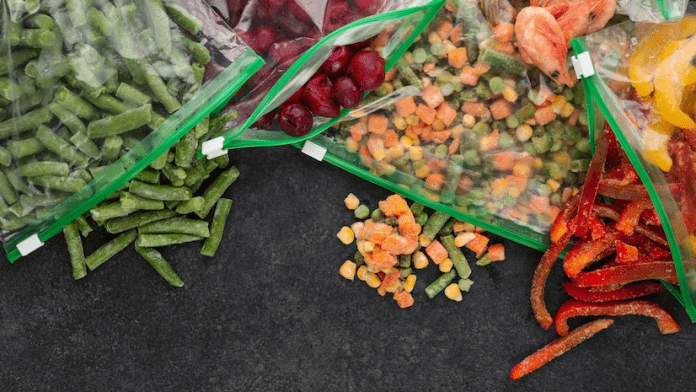Food preservation is a timeless endeavor, driven by the need to extend the shelf life of perishable items and reduce food waste. Among the myriad of preservation methods, freeze-dried food stands out as a remarkable technique that not only ensures long-lasting storage but also retains the flavors, textures, and nutritional value of the original ingredients. In this article, we will explore the fascinating world of freeze-dried food, from its history to its contemporary applications, and its role in providing a gourmet experience for adventurers, astronauts, and everyday consumers.
Unveiling Freeze-Drying: The Basics
What is Freeze-Dried Food?
Freeze-drying, also known as lyophilization, is a preservation process that involves the removal of moisture from food while retaining its structure, taste, and nutrients. It begins by freezing the food at extremely low temperatures, followed by a process called sublimation, where ice is converted directly into vapor. This transforms the frozen water content in the food into a gaseous state, leaving behind a dry, lightweight, and shelf-stable product.
The History of Freeze-Dried Food
From Ancient Roots to Modern Innovation
The concept of freeze-drying dates back centuries, with indigenous peoples employing similar methods to preserve food in cold, arid environments. However, it wasn’t until the 20th century that freeze-drying emerged as a cutting-edge technology for the food industry. During World War II, freeze-dried food gained recognition as a valuable and portable food source for soldiers.
The Significance of Freeze-Dried Food
Long Shelf Life and Minimal Waste
Freeze-dried food offers an exceptionally long shelf life, extending from months to even years. This longevity reduces food waste, making it a sustainable choice for consumers and the food industry alike.
Nutrient Retention
One of the most remarkable features of freeze-dried food is its ability to preserve the nutritional content of the original ingredients. Unlike other preservation methods that can degrade vitamins and minerals, freeze-drying retains the full spectrum of nutrients.
Lightweight and Portable
Freeze-dried food is lightweight, making it an ideal choice for backpackers, campers, and travelers. Its reduced weight and volume make it easy to transport and store.
Flavor and Texture Integrity
Unlike dehydrated foods, freeze-dried food retains its original flavors, aromas, and textures. This ensures that consumers enjoy a gourmet dining experience, even in remote locations.
Applications of Freeze-Dried Food
Astronaut Cuisine
One of the most iconic uses of freeze-dried food is in space exploration. Astronauts aboard spacecraft and space stations rely on freeze-dried meals because they are lightweight, nutritious, and easy to prepare. The absence of moisture prevents microbial growth, ensuring food safety during extended space missions.
Emergency Preparedness
Freeze-dried food has become a staple in emergency preparedness kits. Its long shelf life and nutritional value make it a reliable source of sustenance during natural disasters or other emergencies when access to fresh food is limited.
Outdoor Adventures
Backpackers, hikers, and outdoor enthusiasts appreciate the convenience and nutrition provided by freeze-dried food. These lightweight meals allow adventurers to carry less weight while ensuring they have satisfying and nourishing meals in the wilderness.
Gourmet Dining
In recent years, freeze-dried food has made its way into the world of gourmet dining. Renowned chefs are exploring the culinary possibilities of freeze-dried ingredients, using them to create innovative dishes that showcase the unique textures and flavors of freeze-dried components.
Freeze-Dried Food: A Sustainable Choice
Reducing Food Waste
Food waste is a global issue, with billions of tons of food discarded each year. Freeze-dried food helps combat this problem by extending the shelf life of perishable ingredients, reducing the amount of food that goes to waste.
Minimizing Energy Consumption
Freeze-drying is an energy-efficient preservation method. While the initial freezing phase requires energy, the removal of moisture through sublimation is a low-energy process. This efficiency makes freeze-drying a sustainable choice compared to other preservation methods.
Less Packaging Waste
Longer shelf life means less packaging waste. Freeze-dried food requires minimal packaging, reducing the environmental impact of excess packaging materials.
The Future of Freeze-Dried Food
Innovation and Culinary Exploration
The future of freeze-dried food holds exciting possibilities. As technology advances, we can expect to see more innovative uses of freeze-dried ingredients in gourmet cuisine, as well as the development of new flavors and textures that expand culinary horizons.
Health and Nutrition
As consumers prioritize health and nutrition, freeze-dried food manufacturers are likely to focus on creating products that cater to specific dietary needs, such as gluten-free, organic, or allergen-free options.
Space Exploration
With the ongoing exploration of Mars and beyond, freeze-dried food will continue to be a vital component of astronaut diets. Research into improving the variety and quality of space-bound meals will likely drive innovations in this field.
In conclusion, freeze-dried food is not just a preservation method; it’s a culinary adventure that combines longevity with flavor, nutrition, and sustainability. Whether it’s nourishing astronauts in space, providing sustenance during emergencies, or enhancing outdoor adventures, freeze-dried food plays a crucial role in various aspects of our lives. As we look to the future, this remarkable preservation technique will continue to evolve, offering exciting new possibilities for both convenience and gourmet dining.
